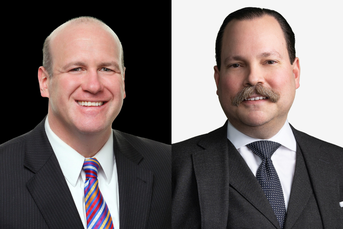Morningstar: DOL fiduciary rule reduces inflows to mutual funds with high loads
 Cracked concrete wall with rule word on and blue sky outside
Cracked concrete wall with rule word on and blue sky outside
With the measure's demise, will the SEC's advice reform sustain the momentum?
The Labor Department’s fiduciary rule reduced the amount of investor money that’s allocated to mutual funds that pay brokers a premium to sell them, according to a Morningstar Inc. report released Thursday.
Since the DOL measure died in court earlier this year, it’s unclear whether this trend in reduced inflows will continue under the Securities and Exchange Commission’s advice reform proposal designed to raise the standard of care for brokers.
The Morningstar study says that prior to 2015, when the DOL rule was proposed, brokers were generally more likely to recommend higher-cost funds. They changed their habits to comply with the pending DOL rule.
“Flows into mutual funds paying unusually high excess loads declined after the DOL proposed its fiduciary rule in 2015, and this shift is statistically significant,” according to the Morningstar report. “This reduction in the distortionary effect of conflicted payments suggests that firms put in place effective policies and procedures to mitigate conflicts of interest in response to the DOL rule and, further, that the SEC’s proposal could maintain this important momentum.”
The SEC is expected to release a final advice rule by the middle of next year. Whether the measure has the same impact as the short-lived DOL rule is an open question.
“It depends on how they enforce it and how seriously firms take it,” said Aron Szapiro, Morningstar director of policy research.
One investor advocate said that the Morningstar findings demonstrate the effectiveness of the conflict mitigation provisions of the DOL rule. He’s not sure that the centerpiece of the SEC rule, Regulation Best Interest, will have the same impact.
“It’s an excellent testament that regulations with teeth can work,” Knut Rostad, president of the Institute for the Fiduciary Standard, said of the Morningstar study. “In its present form, Regulation Best Interest provides none of the teeth that the DOL rule offered.”
Regulation is not the only force reducing the popularity of high-load mutual funds, Mr. Szapiro said. Other factors include an industry movement toward lower-cost funds since the financial crisis and a migration of financial professionals to advisory models that require acting in a client’s best interests.
A report earlier this year by the Investment Company Institute showed that expense ratios for mutual funds have been falling for more than 20 years.
“The DOL rule added fuel to the rocket ship,” Mr. Szapiro said.
Learn more about reprints and licensing for this article.








